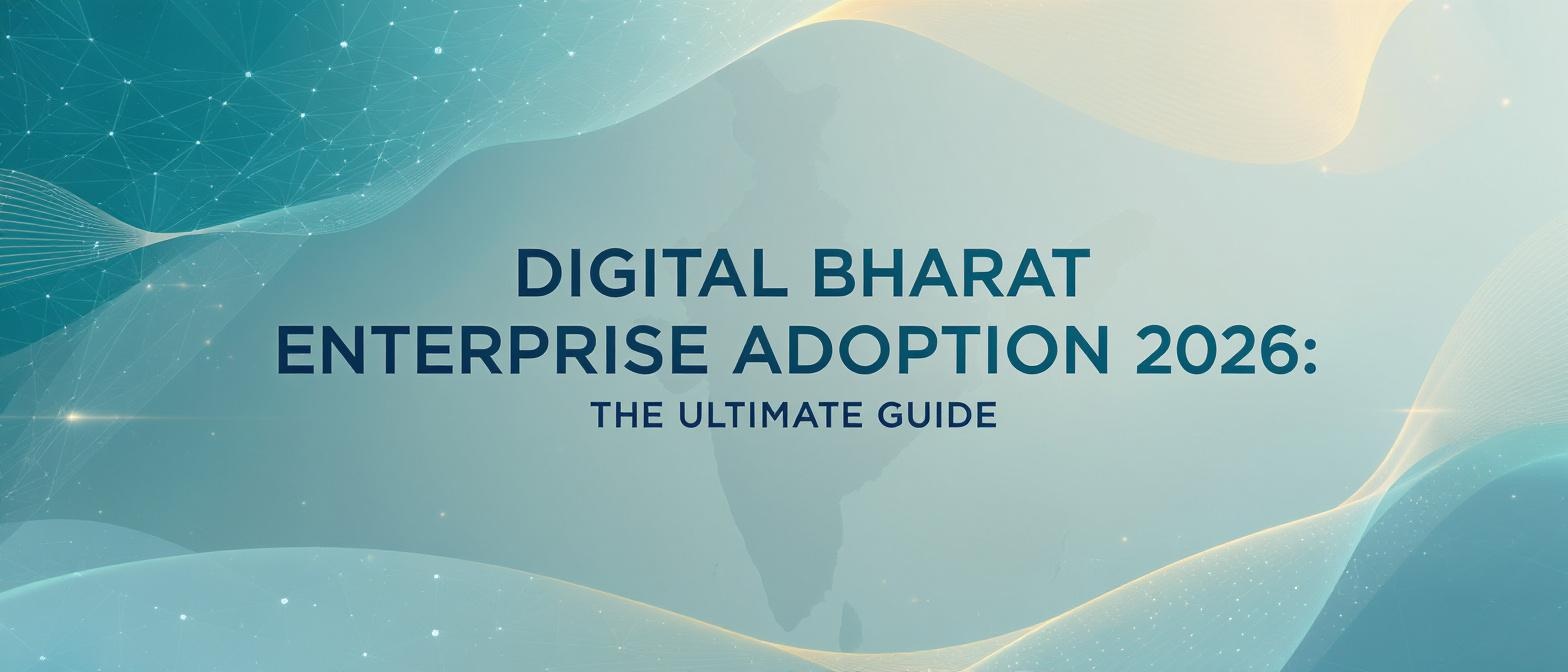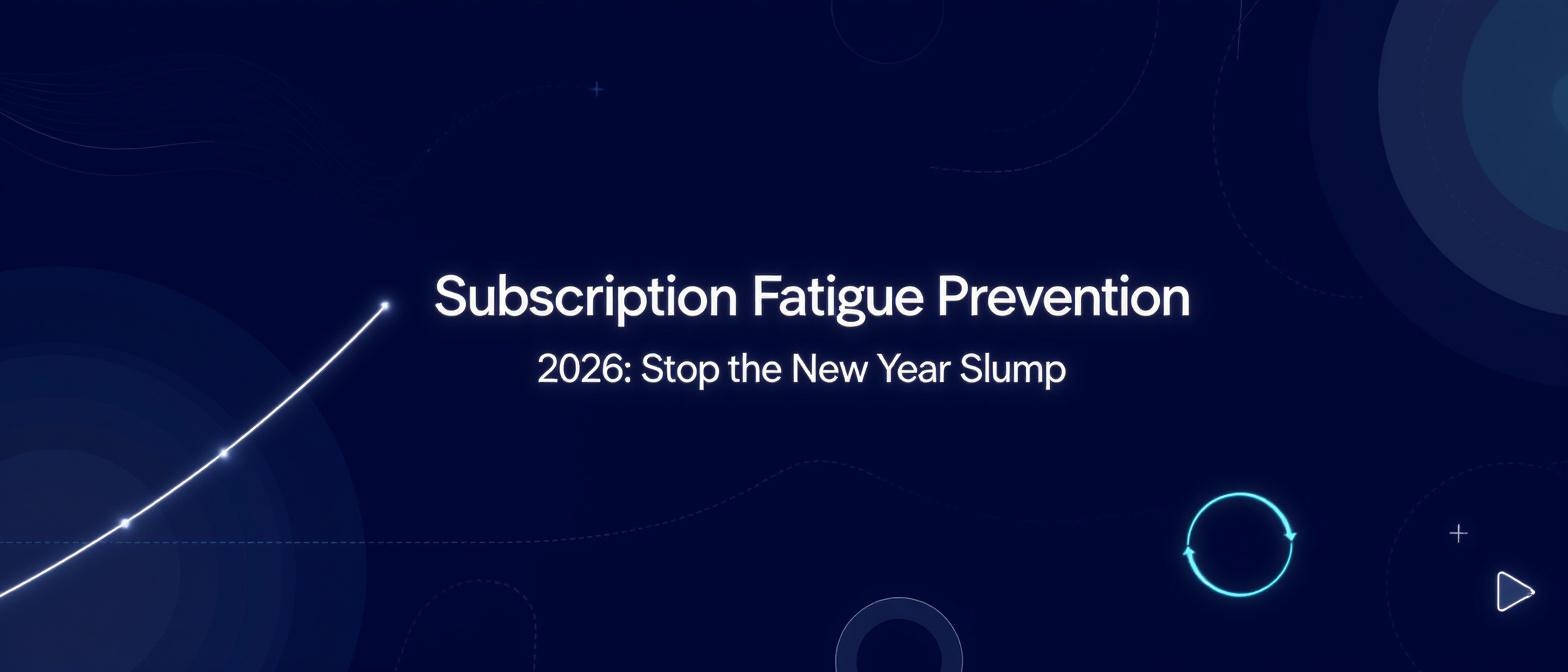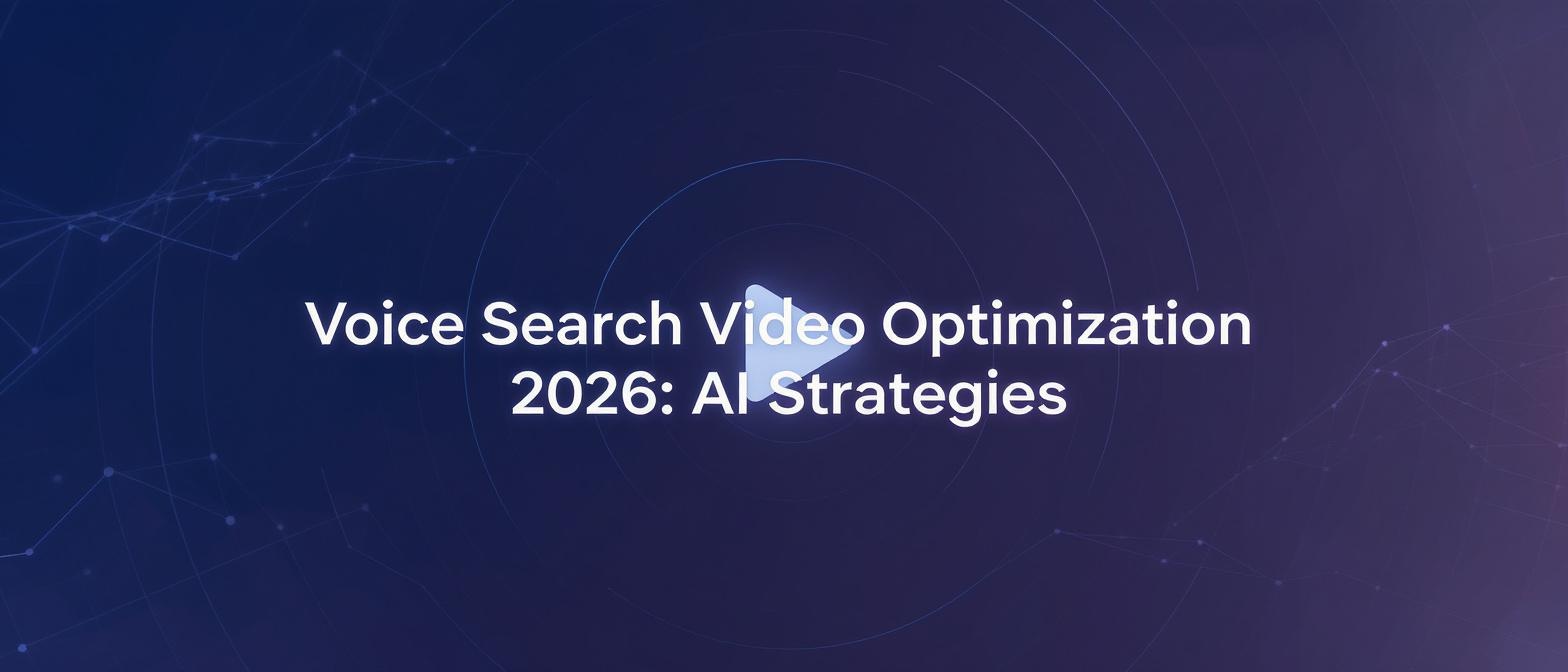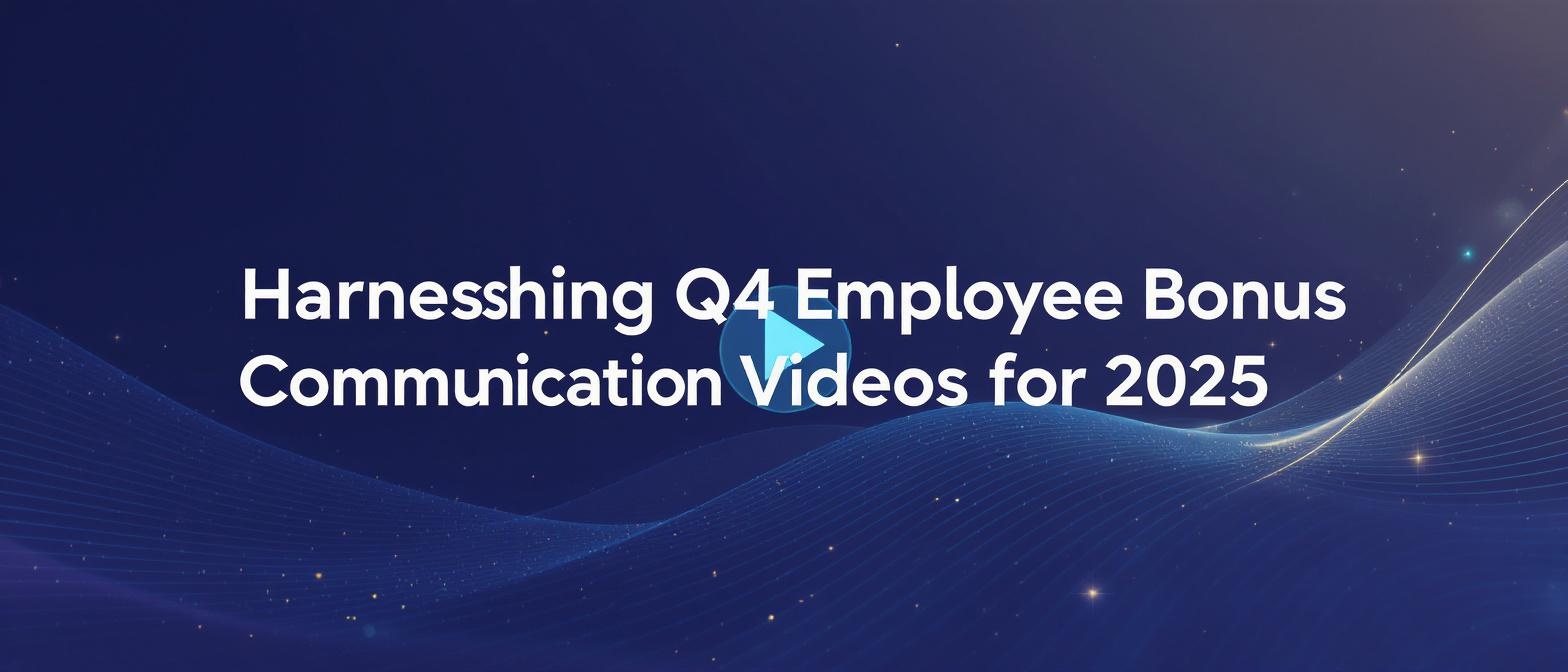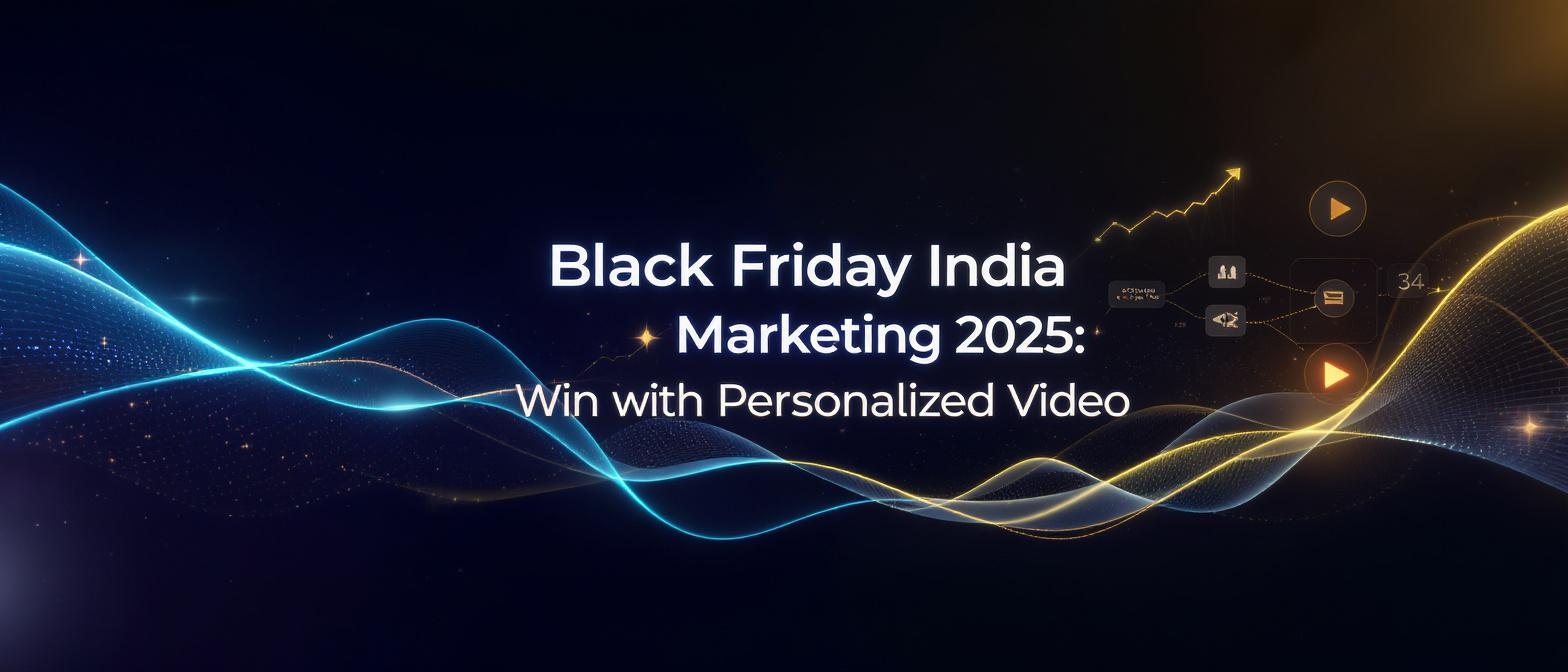Digital Bharat Enterprise Adoption 2026: The Ultimate Guide for CMOs
Approx. 15 minutes read
Key Takeaways
- Align marketing strategies with government schemes to leverage subsidies and expand reach.
- Leverage personalized video campaigns to enhance engagement and digital literacy.
- ONDC and UPI integrations open new markets and accelerate financial inclusion.
- Ensure compliance and ethical data handling for trust and brand reputation.
- Public-private partnerships amplify scheme reach and adoption across diverse demographics.
The year 2026 is not just another date on the calendar; it is the strategic inflection point for India’s digital future. For enterprises and government relations leaders, Digital Bharat enterprise adoption 2026 represents a critical mission to align marketing roadmaps with the nation's ambitious digital initiatives. This alignment is no longer optional—it’s the primary driver for unlocking government subsidies, capturing unprecedented market share in emerging digital ecosystems, and cementing your brand's role in India’s socio-economic transformation.
Integrating with Digital India schemes is the key to thriving in this new landscape. By embedding your campaigns within the frameworks of government initiatives, you gain direct access to powerful incentives and a co-branded platform that resonates with millions of new consumers. This post provides an actionable blueprint for leveraging video personalization, strategic government scheme marketing alignment, and high-impact public-private partnerships to not only meet but exceed the ambitious goals of Digital Bharat by 2026.
1. Digital Bharat Enterprise Adoption 2026: Vision & Enterprise Role
The Digital Bharat initiative is a landmark, government-backed mission to forge a $1 trillion digital economy by 2026. This vision is being built on a foundation of artificial intelligence (AI), cloud infrastructure, and ubiquitous connectivity, designed to empower both metropolitan hubs and Bharat’s “next billion” users in tier-2, tier-3, and rural areas.
The economic impact of this transformation is staggering. According to the Business Software Alliance, AI alone is projected to add up to USD 500 billion to India’s GDP by 2026. This is not a distant forecast; it’s an imminent reality, with enterprise adoption accelerating at a record pace. A recent study by IDC and UiPath found that over 90% of Indian organizations will deploy AI agents by 2026 to enhance productivity, agility, and customer engagement.
For enterprises, aligning with this national mission unlocks a trifecta of strategic advantages:
- Enhanced Government Subsidies and Incentives: Active participation in schemes like the Digital Saksharta Abhiyan (DISHA) provides access to capped financial support and other benefits, directly boosting your bottom line.
- Deeper Market Access: Aligning with Digital Bharat initiatives opens doors to government procurement channels and exclusive public-private partnership opportunities, expanding your market reach exponentially.
- Powerful Brand Positioning: Companies that contribute to the Digital India story position themselves as key innovators and nation-builders, earning significant brand equity and consumer trust.
Source: Business Software Alliance
Source: IDC & UiPath Study
2. Mastering Government Scheme Marketing Alignment
Government scheme marketing alignment is the strategic process of auditing your enterprise marketing campaigns and systematically mapping them to relevant central and state-level digital schemes. It involves synchronizing your brand’s messaging, timelines, and target audiences with the goals of government initiatives to create mutually beneficial outcomes. This is where your marketing strategy transforms into a powerful tool for public-private partnership.
Here are key schemes and their core eligibility criteria that your organization can align with:
- Bharat Digital Saksharta Abhiyan (BDSA): Focused on providing digital literacy training in gram panchayats, this scheme targets rural citizens, especially women and youth. Enterprises can partner to provide training modules, technology, or outreach support. (Source: MeitY)
- Digital MSME Transformation Subsidies: Under programs like Bharat NxtWave, MSMEs receive subsidies to adopt digital tools for operations, marketing, and finance. Tech companies can align their product offerings to become certified vendors under these schemes. (Source: Bharat NxtWave)
- AI for All Skilling Grants: Funded via national initiatives like PM-CARES, these grants support programs aimed at upskilling the workforce in AI and emerging technologies. Ed-tech and IT firms can secure funding by designing curricula that match the scheme’s objectives. (Source: Press Information Bureau)
Practical Steps for Alignment:
- Create a Scheme-Campaign Matrix: Develop a master document that lists all relevant government schemes. For each scheme, map out its application deadlines, available incentive rates, target demographics, and the corresponding marketing campaign from your roadmap.
- Incorporate Scheme Branding: Integrate official scheme logos and approved messaging into your creative briefs, proposals, and RFP responses. This signals a clear intent to partner and builds credibility with government stakeholders.
- Synchronize Timelines: Track scheme application and approval timelines meticulously. Align your public relations announcements, digital ad campaigns, and video launches to coincide with key government milestones for maximum impact and media coverage.
This strategic alignment ensures your marketing spend works harder, generating not just leads but also unlocking valuable government subsidy communication videos and partnership opportunities.
3. Revolutionizing Outreach with Digital Literacy Campaign Automation
Digital literacy is the foundational skill for participation in Digital Bharat. It encompasses the ability to use smartphones, make UPI payments, and access e-governance services. For millions of citizens, mastering these skills is the first step to unlocking the benefits of government schemes.
However, training millions requires scale, personalization, and linguistic diversity—challenges that traditional methods cannot overcome. This is where digital literacy campaign automation becomes a game-changer. By using API-driven video platforms, organizations can generate thousands, or even millions, of unique, localized videos for training, onboarding, and outreach. Platforms like TrueFan AI enable enterprises to automate this process seamlessly.
The official rollout of the “Digital Saksharta Abhiyan” in 100 districts, with a sharp focus on empowering women and rural youth, presents a perfect use case. Instead of generic text messages, imagine sending a personalized video invitation to a training session.
Best Practices for Automated Campaigns:
- Use Dynamic Data Fields: Personalize video invites by dynamically inserting the recipient’s name, village or district, and a unique link to the training session. This simple touch increases relevance and drives higher attendance.
- Automate Vernacular Delivery: Deliver these personalized videos at scale via the WhatsApp Business API or SMS gateways. Crucially, render the videos in regional languages like Hindi, Tamil, Telugu, and Bengali to ensure the message is understood and trusted.
- Embed On-Screen Information: Use on-screen text overlays to embed quick-start tips, step-by-step instructions, and answers to frequently asked questions directly into the video, making it a self-contained learning tool.
This approach is central to executing effective vernacular digital adoption campaigns and creating impactful government subsidy communication videos that resonate across India’s diverse landscape.
4. Driving Impact with Digital India Video Campaigns & Public-Private Partnership Marketing
Text-based communication is losing its effectiveness in a mobile-first, multilingual India. Video is unequivocally the most powerful medium for driving mass adoption. An analysis by MXM India reveals that video content in vernacular languages delivers 80% higher message recall compared to text, making it an essential tool for Digital India video campaigns.
This is where the public-private partnership (PPP) marketing model truly shines. In this model, the government provides the scheme framework, policy support, and official branding, while enterprises bring cutting-edge technology, last-mile reach, and execution agility. The result is a campaign that is far greater than the sum of its parts.
Case Study Example (Hypothetical):
Imagine a state government aims to roll out a “Digital Health ID” scheme to 1,000 villages. They partner with a leading telecom company and an AI video platform.
- Government Role: Provides the scheme details, health benefits information, and official branding.
- Telco Role: Offers anonymized data on target demographics and uses its SMS/WhatsApp network for last-mile delivery.
- AI Platform Role: Generates personalized explainer videos in five different local languages, addressing each citizen by name and guiding them through the registration process.
Steps for Successful Collaboration:
- Joint Needs Assessment: Government and enterprise partners collaborate to define the campaign’s goals, target audience, and key performance indicators (KPIs).
- Script Co-Creation: Marketing and policy teams work together to create a script that is both engaging and compliant, ensuring the scheme’s benefits are communicated clearly and accurately.
- Shared Media and Tracking: The campaign is launched through a shared media buy, with performance tracked on a unified dashboard. This allows for real-time optimization and transparent reporting for all stakeholders.
5. Unlocking New Markets with ONDC Integration Marketing Strategies
The Open Network for Digital Commerce (ONDC) is a paradigm-shifting initiative by the Government of India. It is not another app but an open-source, interoperable network designed to democratize e-commerce and level the playing field for millions of small merchants. As an enterprise, listing your products or services on ONDC is just the first step; the real opportunity lies in ONDC integration marketing strategies.
Once a small merchant joins the ONDC network through your platform, you can use that event as a trigger for a powerful, personalized video onboarding experience. This single touchpoint can build loyalty, drive activation, and differentiate your brand in a crowded marketplace.
A Blueprint for ONDC Onboarding Videos:
- Integrate Data Feeds: Connect your customer and merchant data feed directly to a video personalization API. This allows you to pull key information like the merchant’s name, city, and product category in real-time.
- Auto-Generate a Personalized Welcome: Create a master video template featuring your CEO or a brand ambassador. The API will then automatically generate a unique version for each new merchant, including a personalized greeting like, “Welcome, Rakesh from Jaipur! We’re excited to help you sell your beautiful handicrafts on ONDC.”
- Deliver and Track via SMS/WhatsApp: Send the personalized video via SMS or WhatsApp, complete with a trackable call-to-action (CTA) button such as “Activate Your Listing Now” or “Explore Your Seller Dashboard.”
This strategy transforms a standard onboarding process into a memorable brand experience, accelerating merchant activation and fostering a stronger connection from day one.
Source: ONDC
6. Accelerating Financial Inclusion with UPI Adoption Video Personalization
The Unified Payments Interface (UPI) has become the backbone of India’s digital payments revolution, driving unprecedented financial inclusion. With UPI transaction volumes projected to surpass an astounding 120 billion in 2025, the race is on to onboard the next 100 million users. However, this next wave of adoption requires overcoming friction points like technical anxiety and lack of trust.
This is where UPI adoption video personalization offers a powerful solution. Instead of static tutorials, personalized videos can dramatically reduce user friction by showing them exactly how UPI works in a context they understand. Dynamic overlays can illustrate the transaction flow using the user’s own bank logo, show incentive coupons relevant to them, and guide them step-by-step.
Personalized UPI Onboarding Script Template:
Imagine a celebrity spokesperson delivering a message like this, generated in real-time:
“Namaste [User Name]! I see you love shopping at [Merchant Name]. Paying with UPI is easier than ever. Just tap here to connect your [User's Bank Name] account. Watch how you can pay in one tap... and get 10% cashback on your next purchase!”
To build deeper trust and clarity, the voice-over and subtitles can be auto-localized into the user’s specific dialect—whether it’s Awadhi, Bhojpuri, or Marwari. This level of granular personalization makes users feel seen and understood, significantly boosting conversion rates for first-time UPI activations.
Source: Payment Insights 2025 eCommerce Trends
7. Reaching Bharat's Heartland with Rural Digitization Video Marketing
While India’s digital growth is explosive, a significant gap remains between urban and rural areas. A 2025 report from Kantar and IAMAI highlighted that while rural India is driving growth with over 488 million internet users, overall penetration still lags behind urban centers. This digital divide is compounded by challenges like lower bandwidth and varying levels of digital literacy, demanding a specialized approach to rural digitization video marketing.
To succeed, marketing campaigns must be hyper-efficient, visually intuitive, and culturally authentic.
Proven Tactics for Rural Video Marketing:
- Ultra-Short, Mobile-First Videos: Create crisp, 15-second videos that are optimized for mobile viewing. Deliver them using low-bandwidth codecs to ensure they load quickly even on 2G or 3G networks.
- Pixel-Optimized Animations: Use simple, clean animations to illustrate the benefits of complex services like e-governance portals, UPI payments, or ONDC. Visual storytelling transcends language barriers and makes information easier to digest.
- Leverage Local Influencers and Voice Clones: Forget national celebrities for a moment. Partner with village-level influencers and use AI-powered local language voice clones to deliver messages with unparalleled authenticity and trust.
A Smart Delivery Workflow:
To optimize for low-bandwidth environments, schedule automated batch renders of your videos at 2 AM IST. This avoids peak network congestion. Then, bulk-deliver the videos through regional OTT aggregator apps that are popular in your target districts, ensuring your message reaches its intended audience efficiently. This is key for successful vernacular digital adoption campaigns.
Source: Economic Times: India’s Internet User Base Report
8. Winning High-Stakes Bids with Government Tender Response Videos
In the highly competitive world of government procurement, standing out is half the battle. Static PowerPoint presentations and dense RFP responses often fail to capture the attention of busy tender evaluation committees. It’s time to disrupt this process with personalized government tender response videos.
The purpose is simple: replace a lengthy, text-heavy document with a concise, compelling 2-minute video pitch delivered directly from your enterprise’s leadership. This format allows you to communicate your proposal’s value proposition with clarity, conviction, and a human touch.
A Winning Video Structure:
- Opening Statement: The video begins with your enterprise head (e.g., CEO or Vertical Head) personally addressing the committee, clearly citing the government scheme name and the specific tender reference number.
- Compliance and Value Overlay: As the leader speaks, a clean slide overlay appears on screen, showcasing a checklist of your compliance with key tender requirements. This includes eligibility criteria, proposed subsidy utilization rates, project timelines, and key deliverables.
- Closing Call to Action: The video concludes with a direct callout, pointing the committee to a link where they can access the detailed written proposal, and reiterates your commitment to a successful partnership.
The benefits are immediate. This innovative approach helps your proposal stand out from the pile, clarifies complex technical details, and can significantly speed up the evaluation cycle, giving you a crucial competitive edge.
9. Navigating Compliance & Ethical Considerations in Digital India
As enterprises dive deeper into Digital Bharat, navigating the complex web of compliance and ethical standards is paramount. Successful campaigns must be built on a foundation of trust, transparency, and robust data security. Key regulations like the IT Act, Aadhaar usage guidelines, and emerging data privacy laws demand strict adherence.
This is especially critical when handling personalized customer data at scale. For enterprises, partnering with technology providers who prioritize security is non-negotiable. TrueFan’s ISO 27001 and SOC 2 certifications, for example, provide a verifiable assurance that customer data is handled according to the highest international security standards, a crucial point for creating compliant Digital India compliance videos.
Furthermore, the rise of generative AI brings the risk of deepfakes and misinformation. To counter this, enterprises must enforce strict consent-first policies, ensuring they have explicit permission from both celebrities and end-users before generating any personalized content. Implementing real-time moderation filters to block inappropriate or malicious content is an essential safeguard to protect brand reputation and maintain public trust.
10. TrueFan’s Enterprise Video Personalization Capabilities
To execute the ambitious strategies outlined in this guide, enterprises need a technology partner capable of delivering hyper-personalization at an unprecedented scale. This is where AI-driven video platforms become a critical extension of your marketing team. TrueFan AI's 175+ language support and Personalised Celebrity Videos are designed to meet the unique challenges of the Indian market.
Our enterprise-grade solution offers a suite of powerful features:
- Hyper-Personalization at Scale: Our API-driven pipelines allow you to generate millions of unique videos, dynamically inserting names, locations, product images, and custom offers for true one-to-one engagement.
- Virtual Reshoots & AI Editing: Need to tweak a message or A/B test a call to action? Our platform allows for rapid message changes without costly and time-consuming reshoots, giving your team unparalleled agility.
- Multilingual Localization: Reach every corner of India with flawless multilingual localization in over 175 Indian languages and dialects, complete with perfect AI-powered lip-sync for maximum authenticity.
- Real-Time Rendering and Delivery: Our infrastructure renders personalized videos in under 30 seconds, enabling real-time use cases like post-transaction thank you messages or abandoned cart reminders, delivered automatically via CRM, WhatsApp, or email.
- Advanced Analytics Dashboard: Solutions like TrueFan AI demonstrate ROI through a comprehensive analytics dashboard that tracks view rates, engagement lifts, and conversion metrics, providing clear insights into campaign performance.
Our technology has powered some of India’s largest and most successful personalization campaigns. We generated 354,000 unique “Maa ke liye” videos for Zomato in a single day and delivered 2.4 million personalized festive greetings for Hero MotoCorp, proving our ability to execute at massive scale. We position ourselves as your end-to-end partner for campaign agility and impact.
Frequently Asked Questions
1. What is the single biggest challenge for enterprise adoption of Digital Bharat schemes?
The primary challenge is often the complexity of navigating various schemes and aligning internal marketing calendars with government timelines. Creating a dedicated team or role responsible for a “Scheme-Campaign Matrix” is a crucial first step to overcoming this hurdle.
2. How can we measure the ROI of personalized video campaigns for government initiatives?
ROI can be measured through both direct and indirect metrics. Direct metrics include higher application rates for subsidies, increased attendance at digital literacy workshops, and improved conversion rates on scheme-related CTAs. Indirect metrics include positive brand sentiment, increased media mentions, and stronger relationships with government stakeholders.
3. Is video personalization only for B2C campaigns?
Not at all. As seen in the government tender response video use case, personalization is incredibly powerful in B2B and B2G (Business-to-Government) contexts. Personalized videos can be used for stakeholder updates, investor relations, and high-value B2B onboarding.
4. How does a platform like TrueFan AI handle the pronunciation of diverse Indian names?
Advanced text-to-speech (TTS) and voice cloning AI models are trained on vast datasets of Indian names and phonetics. This allows the AI to accurately pronounce a high percentage of names, even those with regional nuances, ensuring the personalization feels authentic and respectful.
5. What is the typical lead time to launch a large-scale personalized video campaign?
With a technology partner, the lead time is surprisingly short. Once the master video template is shot (a one-time effort), a large-scale campaign generating millions of videos can be configured and launched in a matter of days or weeks, depending on the complexity of API integration.
Your Next Steps to Lead in Digital Bharat 2026
The journey to 2026 is a marathon, not a sprint. The enterprises that will win are those that act decisively, embrace technology, and forge strong public-private partnerships. The rising demand for vernacular content, the rapid pace of rural digitization, and the power of AI-powered personalization are the defining trends of this new era.
Don’t wait for the future to happen. Start building your 2026 Digital Bharat roadmap today.
Schedule a personalized consultation with our experts to discover how TrueFan’s AI video platform can help you map your campaigns to government schemes and unlock new growth opportunities. Let’s start with a pilot project—a 10,000-video outreach for a key subsidy scheme—and show you the power of personalization firsthand.

